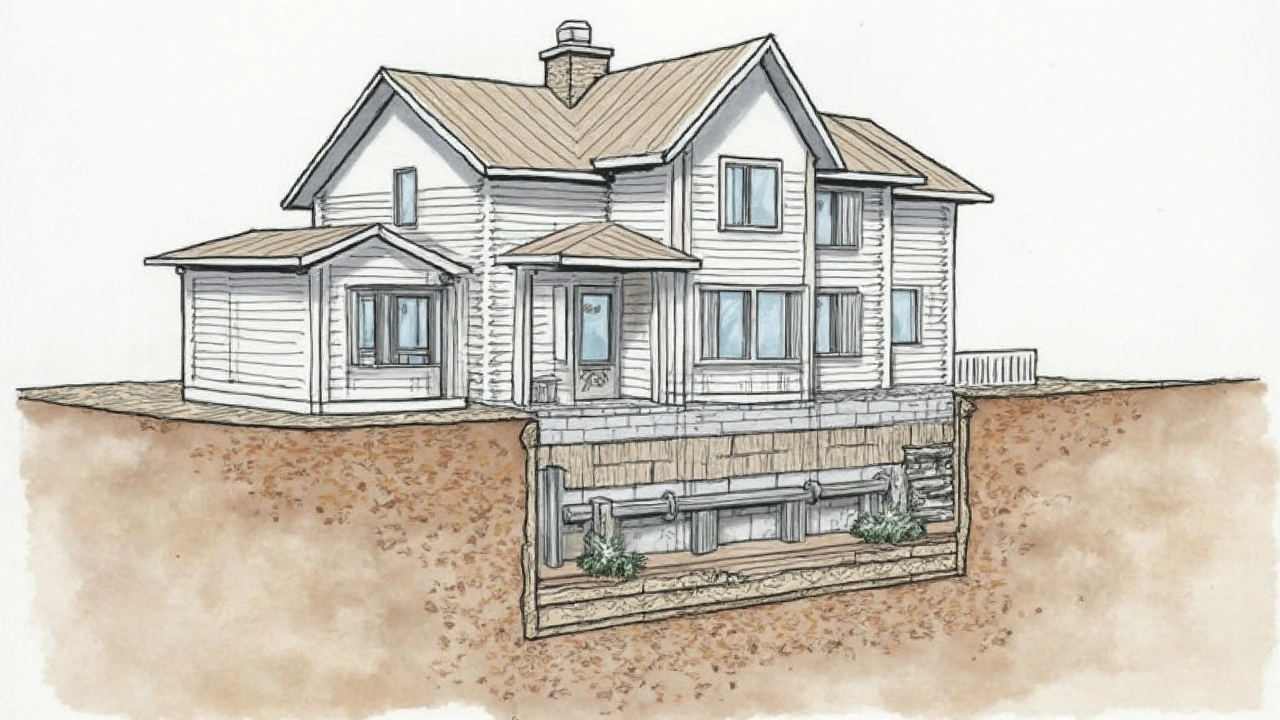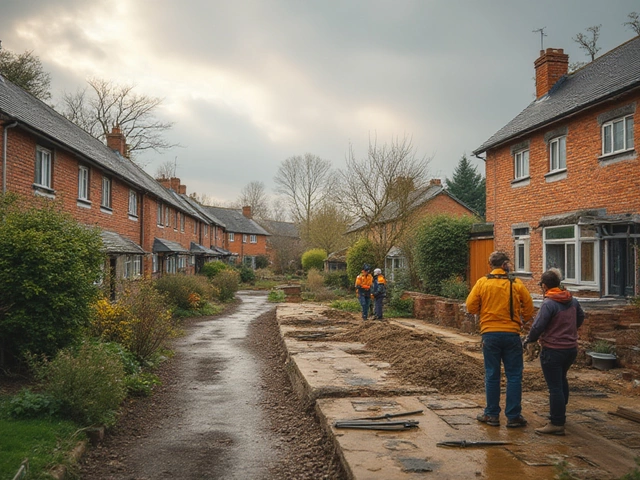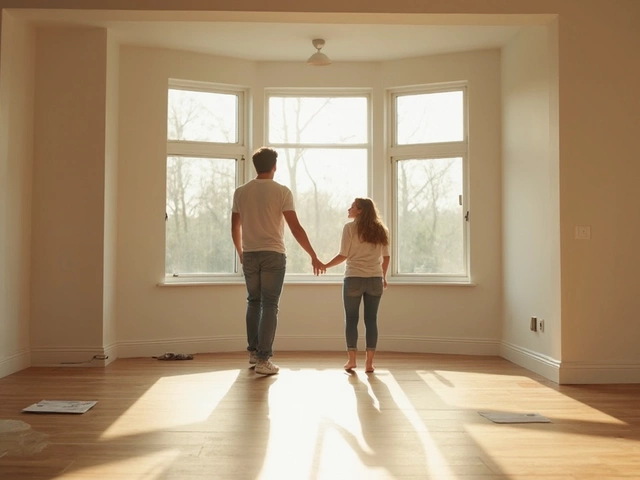
You know, foundations have a hard time. They sit there, minding their own business, holding everything up, and boom—issues pop up. It's like having a puppy, really. Sure, Bruno, my dog, may not crack under pressure, but foundations do, literally.
Here's the scoop: foundations can suffer from a bunch of things like settling, soil problems, or water damage. And while most of these can be sorted out with some expert help, people often wonder, 'Can a foundation be so far gone it can't be fixed?' Well, it's complicated. Kind of like trying to get a teenager to clean their room. It's not impossible, but it can feel that way.
Let's roll up our sleeves and dive into some facts. Knowing what leads to these problems is half the battle. From shifting soil to inadequate drainage, understanding these culprits can really save you a lot of headaches. Plus, spotting issues early—think cracks wider than Bruno's collar or doors that won't quite shut tight—can make a world of difference.
- Understanding Foundation Issues
- Signs Your Foundation Might Be in Trouble
- Modern Repair Techniques
- When Repairs Aren’t Possible
Understanding Foundation Issues
Before we dive deep into the nitty-gritty, let's get this straight: your home's foundation is like its backbone. It keeps everything standing strong and stable. The thing is, just like in humans, foundations can develop their own sets of issues over time. Understanding these problems is like having a map through the maze of foundation repair.
One of the biggest culprits of foundation trouble is soil movement. Yep, the very ground your house stands on can shift, swell, or shrink. This usually happens because of moisture changes. If your area gets a lot of rain, then suddenly dries up, your foundation might start showing signs of stress. It’s like your foundation is trying to do yoga on unstable ground—not so easy!
Another thing to consider is the material used in your foundation. Concrete is popular, but even Superman has his kryptonite. Poor quality concrete or issues like rebar rusting over time can mess things up bad.
| Common Foundation Issues | Potential Causes |
|---|---|
| Cracking | Soil movement, poor drainage |
| Settling | Uneven moisture, sinkholes |
| Bowing walls | Hydrostatic pressure, poor construction |
Hydrostatic pressure is another sneaky villain. This happens when water builds up in the ground around your house, pressing against your foundation like an unwelcome hug. Over time, this pressure can cause walls to bow or crack, and nobody wants that kind of drama.
Now, don't panic just yet. There's a bright side: foundation issues are pretty common, and so are the fixes. You just need to keep an eye out for warning signs like cracks and shifting. If you catch them early, you're more likely to fix things before they spiral out of control.
Signs Your Foundation Might Be in Trouble
Noticing a few odd changes around your house? Before you think it's just the house settling into old age like a comfy shoe, it could be shouting for help. Let's break down some red flags that scream 'foundation issues' louder than Bruno when he's eyeing a snack.
A huge sign of foundation repair needs is cracks. Walk around your house and look at the walls, floors, and ceilings. If you see cracks wider than a quarter or ones zigzagging like a racing track, it's time to take notice. These aren't just rustic charm marks; they're the early warnings of something deeper.
Ever noticed doors that suddenly don't fit? Or windows playing hard to get? Foundation shifts can cause frames to warp, making doors and windows stick or jam. Trust me, no one enjoys forcing a door closed like trying to squeeze into too-tight jeans.
Feeling slanted lately? You might have a sloping floor. It’s the kind of funhouse effect you don’t want in your living room. Grab a level—or even a marble—place it on the floor, and watch how it rolls. Fast movers mean you're dealing with sloping issues.
- Basement moisture: Dampness could mean your foundation is letting in water.
- Chimney pulling away from the house: Not just dangerous, but a sure sign there's trouble below.
- Buckling walls: If your walls are trying to give you a hug by curving inward, definitely focus on foundation repair.
Sometimes, these signs come with other subtle hints. Got a musty smell in the basement or a crack in the garage floor that's getting bigger? Small signs can snowball into big headaches. Remember, catching these early can save you big money on repairs.
| Common Signs | Possible Causes |
|---|---|
| Wall cracks | Settling/soil movement |
| Sticking doors | Foundation shift |
| Chimney cracks | Foundation sinking |
Don't ignore these signs thinking they're just part of having an older house. Act now—your home (and your wallet) will thank you.

Modern Repair Techniques
So, you've got cracks in your foundation and it's staring at you like an unsolved mystery. Fear not, because modern repair techniques are here to save the day. Think of it like those home renovation shows, but specifically for your crumbling house base!
First up, let's talk about foundation repair methods that are getting all the buzz. One popular technique is underpinning. This involves extending the foundation so it's supported by more stable soil or even bedrock. It's kind of like giving your house a new set of legs.
Another fancy method is mudjacking, or slabjacking. Don't worry, it's not as messy as it sounds. This process involves pumping a mix of sand, cement, and other materials under a sunken slab to lift it back up to the desired level. It's like giving your foundation a little boost, kind of like that afternoon coffee you need.
Then there's piering, a nifty solution for sinking foundations. Contractors drive steel or concrete piers deep into the ground until they hit solid support. It's like securing your house with super-strong stilts.
Finally, let's not forget about sealing those pesky cracks and waterproofing. These can prevent further water damage and keep your home snug and dry. There are specialized epoxies and polyurethane fillers available that can seal up cracks, much like patching a leaky boat.
Here's a quick recap of some of these awesome techniques:
- Underpinning: Extending foundation depth for stability.
- Mudjacking or Slabjacking: Raising sunken slabs with injected materials.
- Piering: Installing piers to secure sinking foundations.
- Crack Sealing: Using epoxies to fix and prevent water infiltration.
And a little fun fact: recent stats show that nearly 60% of foundation issues can be resolved with these modern methods without breaking the bank.
So there you have it, folks. If your home foundation is throwing a fit, these innovative repair techniques might be just what you need to get it back on solid ground.
When Repairs Aren’t Possible
Alright, let's tackle the elephant in the room. Sometimes, a foundation gets so badly damaged, fixing it just isn't in the cards. It's like trying to fix a phone that's been run over by a truck—it might be time to move on. So, what really makes a foundation unfixable?
The main culprits are usually extensive structural damage, extreme environmental factors, or simply, bad luck in the form of poor initial construction. Say the original builders cut corners or didn’t account for soil conditions, you might end up with a foundation that’s both costly and technically challenging to fix.
Take major structural damage as an example. If you’ve got massive horizontal cracks, severe uneven settling, or significant bowing in the foundation walls, you might be looking at problems beyond simple repairs. These are signs that the structural integrity is compromised, and no amount of patching will bring it back to life.
Another roadblock can be environmental effects. Areas prone to earthquakes or flooding can wreak havoc on a foundation. Even the best repair might not withstand Mother Nature’s fury in such zones. In these cases, a full replacement or even moving the home might be the only solution.
- Look out for horizontal cracks thicker than your pinky. They often mean serious trouble.
- If your doors and windows are wonky no matter what you do, it might be a deeper issue than adjustments can fix.
- If a bunch of foundation experts shake their heads at your house like it’s on its last legs, it’s probably time to explore different options.
Sure, it sounds daunting, but having a clear idea of when a foundation is beyond saving helps you make smart choices. Remember, sometimes starting fresh can be the wiser move in the long run. Better to build something stable from scratch than constantly patch up something unstable.




